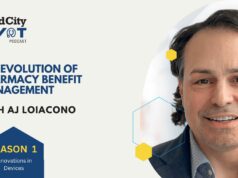
Research and development for rare diseases has traditionally been the province of small biotech companies and targeted at very much a niche market. But in recent years, there has been a growing interest in the space among investors, researchers, and pharmaceutical companies—giving hope to the 30+ million Americans with diseases considered “rare.”
In the last several years, the FDA has approved new treatments for chronic graft-versus-host disease, Duchenne muscular dystrophy, relapsed or refractory large B-cell lymphoma, and many other rare diseases. In fact, in 2020, 46.9% of all novel drugs approved by the FDA were for rare diseases, as compared to 23.5% in 2012. Investment is expected to continue trending upward, with estimates suggesting that global spending on rare disease therapies will reach $260 billion by the end of 2025.
Perhaps because of the increased attention and investment, this area has also become a “sexier” part of the business to work in. When I started in rare disease in 2010, most people did brief stints in the division, hoping to move on to the bigger, revenue-generating drugs in the spotlight. Now, I routinely meet with colleagues and prospective employees who are excited about this part of the healthcare business; they want to build their careers around it because they see it as a meaningful way to serve patients.
Factors driving increased investment in rare disease
Despite the small patient populations that rare diseases typically affect and the high cost of developing drugs for those patients, there are a number of incentives and market shifts encouraging larger organizations to move into this space.
One of the primary drivers is the increasing availability of regulatory incentives for developing drugs for these conditions. In the US, the Orphan Drug Tax Credit and R&D tax credit offset some of the investment costs, and the FDA’s priority review vouchers and fast track designations allow for more expedited drug reviews for rare disease treatments.
Also, patient advocacy organizations and foundations have become much more active in drug research and commercialization efforts, providing further financial incentives for organizations or researchers looking to partner. The Cystic Fibrosis (CF) Foundation, for example, provided early support for research and drug development that helped pave the way for discovery of the genetic mutation that causes CF. They also established a venture philanthropy arm to fund drug development programs and work with pharmaceutical companies to bring new therapies to market.
A final factor driving investment is the promise of substantial patient impact. Rather than competing for incremental innovation for common diseases, companies investing in rare disease have the opportunity to invent completely novel cures for what are often otherwise lifelong conditions. An estimated 95% of the 7,000+ known rare diseases currently have no treatment options.
I’ve seen firsthand what it’s like for loved ones to have one of these conditions, which has made me all the more passionate about finding cures. My college roommate’s father had hemophilia with inhibitors–a rare and severe form of hemophilia that only affects about 1,000 people in the U.S. My roommate’s third child and one of her nephews also ended up having hemophilia, as did a cousin of mine. Hemophilia also happened to be the first rare disease I worked on at Novo Nordisk. I’ve seen the effect a disease like that has on a family, which has given me a deep understanding of and appreciation for the impact that R&D, commercialization and marketing can have on patients and their familiesi.
Investment is not without its challenges
Despite newfound incentives, investors face a number of challenges when entering the rare disease.
For one, these conditions are often not widely understood. While there is often an abundance of clinical literature about common conditions, there’s often very little published about rare diseases. This makes partnership with patient groups essential, as patients can offer insight into their experiences living with a particular condition and interacting with the health care system.
Small patient populations in turn make it challenging to recruit enough patients for clinical trials, which can drive up the cost and time required for drug development. Rather than searching for clinical trial-eligible patients by diagnostic code, clinicians/researchers may need to identify patients using healthcare claims data, including procedures and use of medications, among other things.
Emerging technology holds great promise for continued growth in rare disease
Using AI, we can help patients get an accurate diagnosis faster and the right treatment sooner. It can take, on average, seven years and seven providers for patients to even realize they have a rare disease. Using AI and claims data – to look at the patterns revealed by patients who presented with certain symptoms and were given specific treatments—we can significantly reduce the time that patients bounce around the healthcare system.
Similarly, genetic sequencing and biomarkers will not only accelerate rare disease research, they, too, will help speed up the diagnosis of rare diseases so patients get to the right provider in a fraction of the time.
Personally, I’m heartened by the surge in interest in treating rare diseases. After all, improving lives is the reason most of us entered the healthcare field. I look forward to continuing to see investment and innovation in this space.








